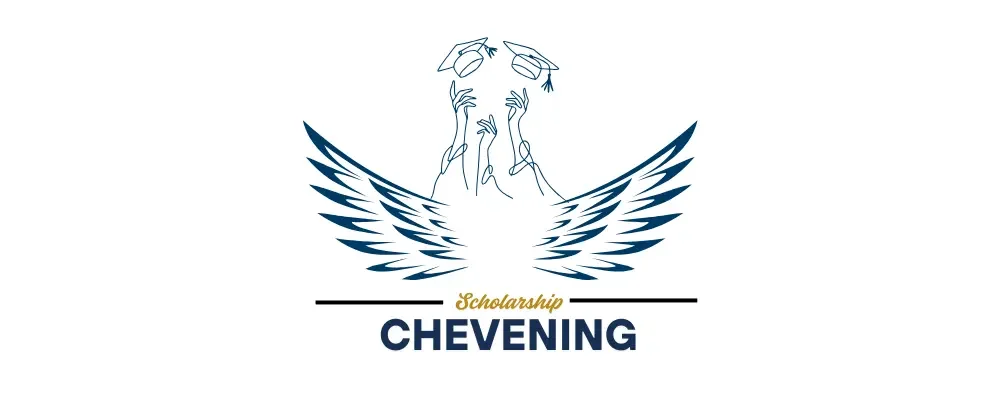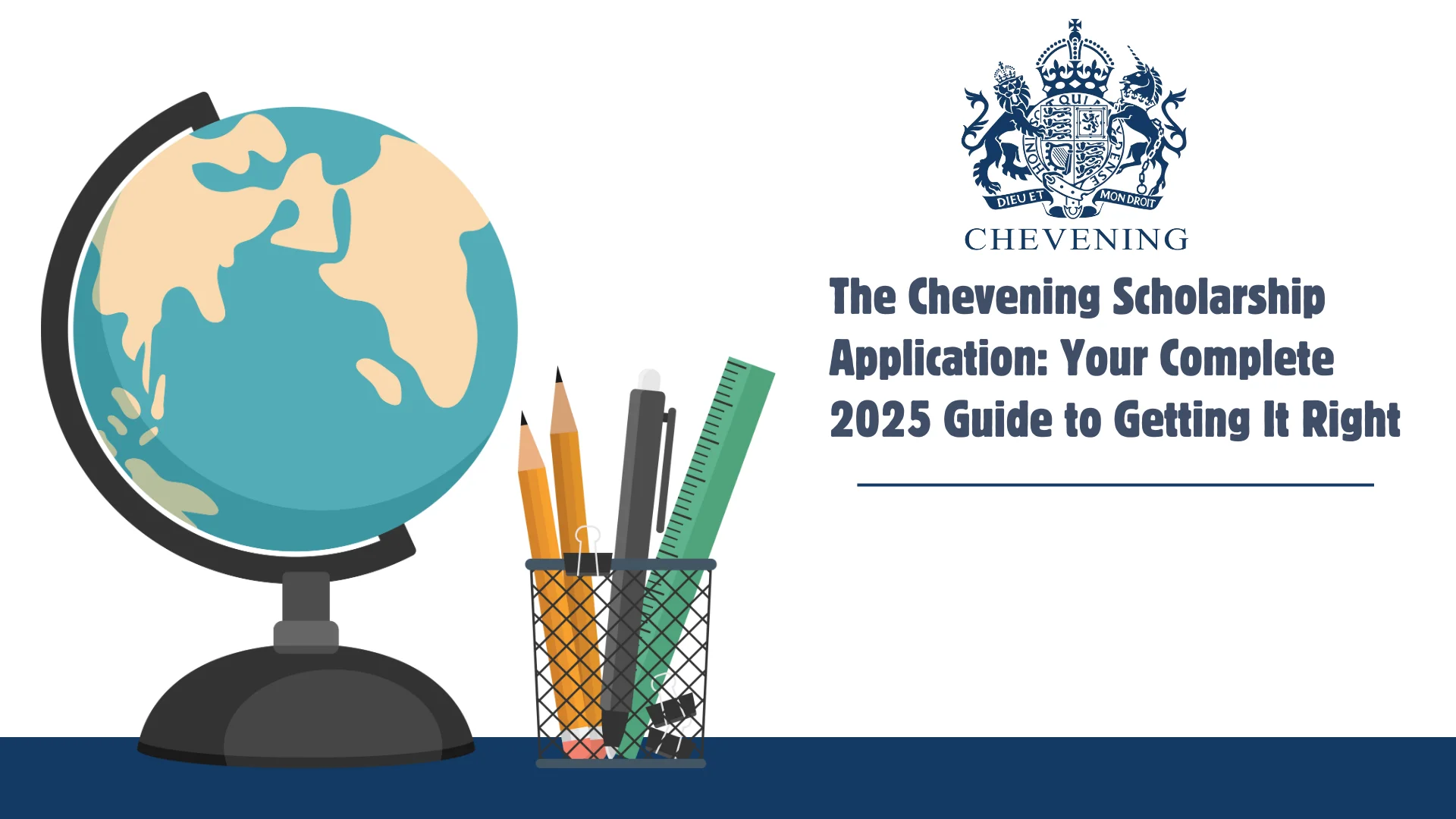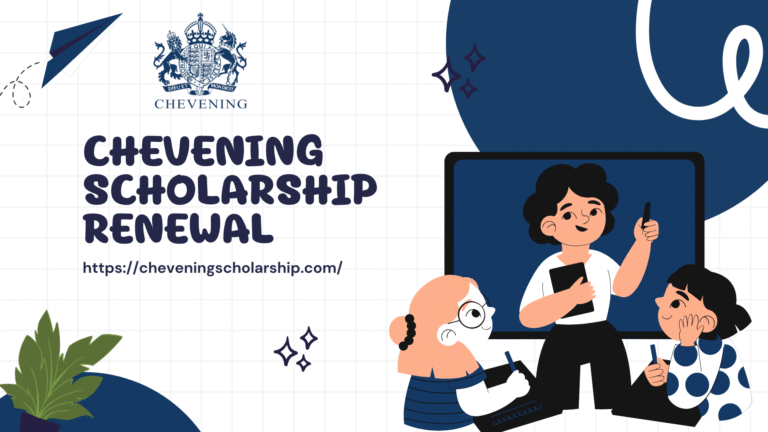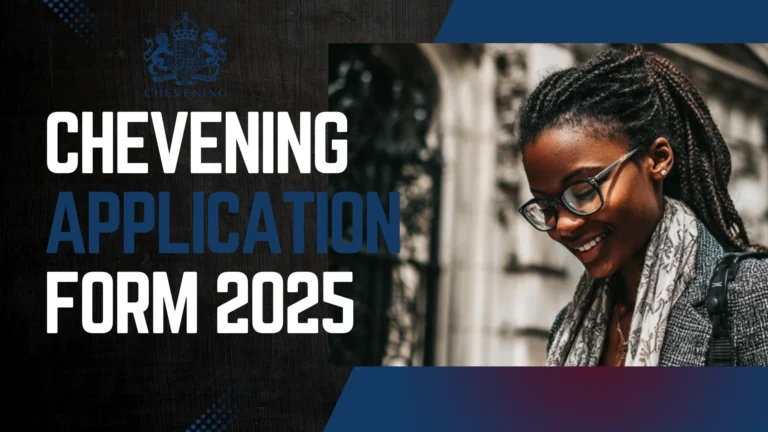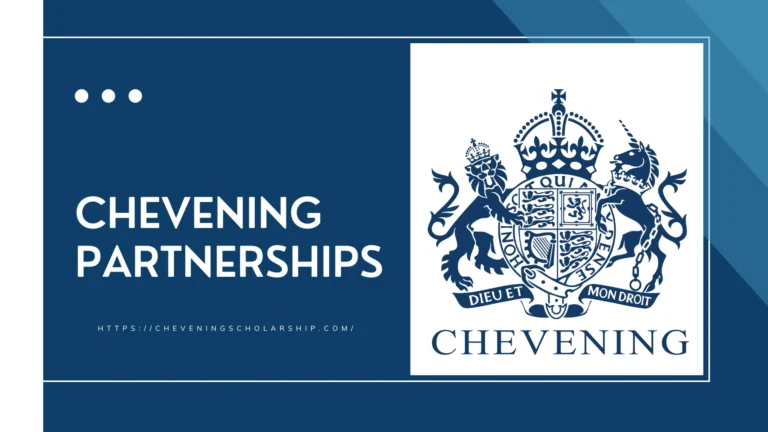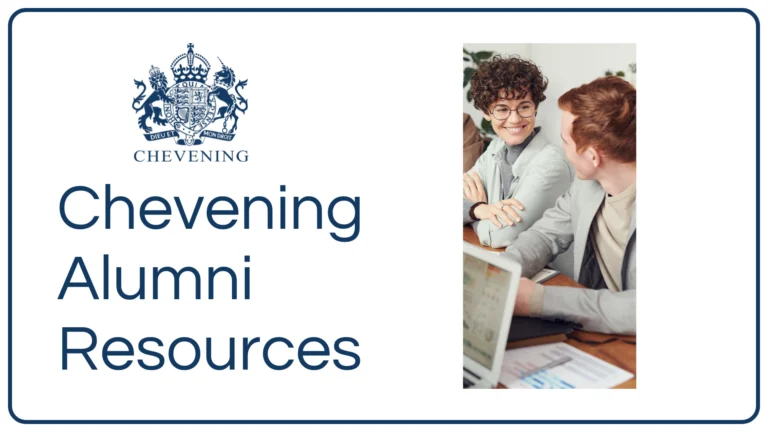The Chevening Scholarship Application: Your Complete 2025 Guide to Getting It Right
Let me tell you about the moment everything changed for Amara. She’d spent three weeks staring at her laptop screen, cursor blinking mockingly at the top of her Chevening leadership essay. The application deadline loomed. Her references were ready. Her university choices were finalized. But those four essays? They felt impossible—until she stopped trying to sound “impressive” and started telling her actual story.
Six months later, she was packing for London with a fully-funded master’s degree waiting.
Here’s the truth about the Chevening scholarship application: it’s not a test of how eloquent you can be or how many big words you know. It’s a conversation. The Foreign, Commonwealth & Development Office wants to know one thing—are you someone who’ll take this opportunity and create meaningful change back home? Everything else is just details.
I’ve spent years helping international students navigate scholarship applications, and the Chevening process is unlike anything else. It’s rigorous, yes. Competitive, absolutely—we’re talking about accepting roughly 2-3% of applicants. But it’s also refreshingly straightforward once you understand what they’re actually looking for.
This guide will walk you through every single step of how to apply for Chevening, from checking if you’re eligible to nailing that final interview. No fluff, no corporate speak—just practical advice that actually works.
Understanding Chevening Eligibility: Are You Actually Qualified?
Before you invest hours into this application, let’s talk about Chevening eligibility criteria. Nothing’s more frustrating than crafting perfect essays only to discover you didn’t meet basic requirements.
The Non-Negotiables
Citizenship: You must be a citizen of a Chevening-eligible country. Check the official list—it covers over 160 countries, but there are exceptions. If you hold dual citizenship with the UK, you’re unfortunately not eligible. Same if you have British citizenship or another form of British nationality.
Return home requirement: Here’s the deal-breaker for some—you must return to your country of citizenship for at least two years after your scholarship ends. No exceptions. The UK isn’t investing in you to drain talent from developing countries; they’re investing in you to return and create impact there.
Academic qualifications: You need an undergraduate degree that qualifies you for entry into a UK master’s programme. Different universities have different standards, but generally, this means:
- Upper second-class honours (2:1) in the UK system
- 3.0 GPA or higher in the US system
- Equivalent qualifications from other countries
If your degree is borderline, don’t automatically disqualify yourself. Some universities are more flexible, especially if you have strong work experience.
Work experience: This is where it gets specific. You need at least two years (2,800 hours) of work experience. This can include:
- Full-time employment
- Part-time work (calculated proportionally)
- Voluntary work
- Internships
- Self-employment
The key is that it must be after you graduated from university. Your summer job during undergrad doesn’t count, but that year you spent with an NGO before grad school absolutely does.
The Often-Overlooked Details
Previous study in the UK: If you’ve already studied in the UK with UK government funding, you’re not eligible. However, self-funded UK study is fine—actually, it can strengthen your application because you’re already familiar with the system.
Current study: You can’t currently be studying in a UK university when you apply. Finish your current course first, then apply.
Conditional vs. unconditional offers: You need to apply to three different UK universities and receive unconditional offers from at least one by July 2025. More on this strategy later.
The “Grey Areas” People Always Ask About
“I’m two months short of 2,800 hours. Should I still apply?” Honestly? No. The system is automated—you’ll be filtered out before human eyes see your application. Wait until next year when you genuinely qualify.
“My degree is from a lesser-known university. Will that hurt me?” Not remotely. Chevening cares about what you’ve done since graduation and what you plan to do afterward. Your university’s ranking matters far less than your leadership trajectory.
“I’m 45. Am I too old?” There’s no upper age limit. I’ve seen successful applicants in their 40s and even 50s. If you have leadership potential and a solid plan for impact, age is irrelevant.
“Can I apply for Chevening after bachelor degree immediately?” Only if you have two years of work experience completed. If you graduated yesterday, you’ll need to work for two years first. Use that time wisely—build the leadership experience that’ll make your application compelling.
Navigating the Chevening Application Portal: Getting Started
The Chevening application portal opens in early August each year. Let me walk you through it because first impressions matter, and this system can feel overwhelming.
Setting Up Your Account
Visit the official Chevening website and create your account. You’ll need:
- A valid email address (use something professional—
[email protected]isn’t the vibe) - A password you won’t forget (write it down somewhere secure)
- Basic personal information
Once registered, you’ll receive a confirmation email. Click the link, and you’re in.
Understanding the Dashboard
Your dashboard shows different sections you’ll need to complete:
Personal Details: Standard stuff—name, date of birth, contact information, citizenship. Double-check everything. A simple typo in your passport number can cause major headaches later.
Education History: List all your tertiary education, starting with your most recent. Include:
- Institution names
- Dates attended
- Qualifications obtained
- Grades or classifications
If you studied abroad or have qualifications from multiple countries, include everything. The more complete your educational picture, the better.
Work Experience: This is where you’ll list positions held, responsibilities, and achievements. The portal calculates your total hours automatically, so be precise with dates and hours per week.
Pro tip: Frame your work experience around leadership and impact. Don’t just say “managed social media”—say “led digital communications strategy reaching 50,000+ stakeholders, resulting in 200% engagement increase.”
Course Choices: You’ll select three UK universities and specific master’s programmes at each. This requires serious research—we’ll dive deeper into this section shortly.
References: You need two professional references who’ve known you in a work capacity for at least one year. Choose wisely—generic letters kill applications.
Essays: The heart of your application. Four essays totaling around 2,000 words. We’re dedicating entire sections to these because they’re that important.
Common Portal Issues and Solutions
Portal freezing or timing out: This happens during peak periods, especially near the deadline. Save your work constantly using the “Save and Continue Later” button. Don’t try to complete everything in one marathon session.
Can’t upload documents: The system accepts PDF files under 5MB. If your document is larger, compress it. If it’s in another format, convert it to PDF.
Forgot to save changes: The portal doesn’t auto-save. You must manually save each section before moving to the next. I’ve seen applicants lose hours of work because they didn’t click “Save.”
Application status confusion: After submission, your status will show as “Submitted.” Don’t panic if it takes a few days to update. The system processes thousands of applications.
The Chevening Application Timeline: Key Dates You Cannot Miss
Let’s talk about the Chevening application deadline and the entire timeline because missing a deadline means waiting a full year to reapply.
The Annual Cycle
Early August: Application portal opens. Don’t wait to start—early birds have more time to refine their applications.
Early November (typically first Tuesday): Application deadline at 12:00 GMT. Not midnight in your timezone—12:00 GMT. Convert this to your local time and mark it everywhere.
November to February: Application review period. You’ll hear nothing during this time. Don’t contact Chevening asking for updates—they’re reviewing thousands of applications.
February to April: Shortlisting notifications. If selected for an interview, you’ll receive an email with details.
April to June: Interviews conducted at British embassies or consulates in your home country.
July: Final results. Successful candidates receive conditional offers.
July to September: University application and offer confirmation period. You need unconditional university offers to convert your Chevening conditional offer to unconditional.
September: Final documentation and pre-departure preparation.
Late September/Early October: Travel to UK and begin your studies.
Critical Intermediate Deadlines
University application deadlines: Most UK universities have deadlines between December and March. However, for Chevening, you should apply earlier—ideally September to November. Why? You need those offers by July.
Reference letter submission: Your referees must submit their letters before the November application deadline. Don’t wait until the last week to ask them—give them at least 4-6 weeks.
University offer acceptance: Once you receive university offers, you have limited time to respond. Keep track of each institution’s specific deadlines.
The “Hidden” Timeline Nobody Tells You About
Start your application preparation in June or July if you’re serious about being competitive. Here’s what that early preparation looks like:
June-July:
- Research universities and programmes
- Identify and approach potential referees
- Start brainstorming essay topics
- Compile your work experience documentation
August:
- Create portal account immediately when it opens
- Fill in personal details, education history, and work experience
- Submit university applications
September:
- Write essay first drafts
- Have trusted people review them
- Refine and rewrite
October:
- Finalize all essays
- Complete all portal sections
- Do a final review of everything
- Submit at least a week before deadline (trust me on this)
Choosing Your Universities: Strategy Over Prestige
The Chevening university choices section trips people up because everyone assumes you should aim for Oxford, Cambridge, and Imperial. But here’s what actually matters.
The Three-University Rule
You must select three different UK universities and one master’s programme at each. The strategic approach:
University 1 (Ambitious Choice): A top-ranked institution that’s extremely competitive. Think Oxford, Cambridge, LSE, Imperial, UCL, Edinburgh. You might not get in, but if you do, excellent.
University 2 (Target Choice): A strong university where your qualifications and profile make you a competitive candidate. Russell Group universities like Manchester, Warwick, Bristol, Durham, Sheffield fall here.
University 3 (Safety Choice): A solid institution where you’re confident of receiving an offer. Remember, you need at least one unconditional offer by July to accept your Chevening scholarship.
Selecting the Right Programme
Don’t choose programmes randomly. Your selections must:
Align with your career plan: If your essays discuss climate policy work, don’t suddenly apply for finance programmes. Coherence matters.
Be one-year master’s courses: Chevening funds 12-month taught master’s degrees. Not MPhil, not PhDs, not two-year programmes.
Accept international students: Obvious, but some programmes prioritize UK/EU students.
Have clear entry requirements: Check whether you meet academic requirements. Some programmes require specific undergraduate majors or prerequisite courses.
Research Beyond Rankings
Visit university websites and look for:
Module content: Do the courses cover what you actually need to learn?
Faculty expertise: Are professors researching topics relevant to your interests?
Practical opportunities: Labs, fieldwork, industry partnerships, internships—what hands-on learning exists?
Alumni outcomes: Where do graduates work? What positions do they hold?
Location considerations: London is expensive and overwhelming. Manchester offers different experiences than Edinburgh. Think about what environment helps you thrive.
The Application Strategy
Apply to universities separately from your Chevening application. You can apply to more than three if you want backup options, but list only your top three on the Chevening form.
Apply early: Don’t wait for your Chevening results. Apply to universities in September/October. Many programmes fill up or close early.
Be strategic with programme names: Some universities offer similar programmes with different names. Choose carefully—you’re committing to study what you select.
Keep evidence: Save all university correspondence. You’ll need to prove you received offers.
Mastering the Chevening Essays: Where Applications Win or Lose
Here’s the reality: the Chevening essay tips section is why you’re really here. These four essays are where 80% of application success is determined.
Understanding What Chevening Actually Wants
Before writing a single word, understand this: Chevening isn’t looking for perfect writers. They’re looking for leaders who:
- Have already demonstrated leadership
- Have clear plans for future impact
- Will benefit specifically from UK study
- Will return home and create change
Your essays must prove these four things. Everything else is secondary.
Essay 1: Leadership and Influence (500 words)
This is where most applicants either soar or crash. The prompt asks about your leadership experiences and how you’ve influenced others.
What NOT to do:
- List job titles without context
- Claim credit for team achievements
- Use generic leadership clichés (“I’m a born leader”)
- Focus solely on formal positions
What ACTUALLY works:
- Tell specific stories with concrete outcomes
- Show leadership in unexpected contexts
- Demonstrate influence, not just authority
- Include challenges and how you overcame them
The Formula That Works:
Opening: Hook with a specific moment that illustrates your leadership.
Body: 2-3 detailed examples showing different leadership dimensions. For each:
- Set the context (What was the situation?)
- Explain your role (What did you specifically do?)
- Describe the impact (What changed as a result?)
- Reflect on what you learned
Closing: Connect these experiences to your Chevening goals.
Real Example Structure:
“When the flood destroyed our community’s only school, I didn’t have a title or budget—just a phone and determination to rebuild before the new term started. [Then explain how you mobilized community members, negotiated with local government, coordinated volunteers, and reopened the school in six weeks]. This taught me that leadership isn’t about position—it’s about taking responsibility when others hesitate.”
Essay 2: Networking (500 words)
This essay asks how you’ve built relationships and why you’re good at networking.
What Chevening wants to know:
- Do you naturally connect with diverse people?
- Can you build mutually beneficial relationships?
- Will you engage with the Chevening community?
- Do you understand networking is about giving, not just taking?
The approach that works:
Avoid: “I’m good at networking because I’m friendly and have many contacts.”
Instead: “When I joined the renewable energy sector, I knew nobody. Within two years, I’d built a network of 40+ professionals across government, NGOs, and private sector by consistently offering value—sharing research, making introductions, volunteering expertise—before asking for anything.”
Structure it around:
- How you build relationships authentically
- Specific networking successes and their impact
- How you maintain long-term connections
- What you offer others (not just what you get)
- How you’ll leverage and contribute to Chevening’s network
Essay 3: Studying in the UK (500 words)
This essay explores why you’ve chosen your specific courses and UK universities.
The mistake everyone makes: Generic praise of UK education or university prestige.
What actually impresses: Specific, researched reasons connected to your career goals.
The structure:
Paragraph 1: Your career goal and the capability gap you need to fill.
Example: “To reform my country’s outdated agricultural policy, I need to understand climate-smart agriculture economics and policy design—expertise I currently lack.”
Paragraph 2: Why UK study specifically addresses this gap.
Example: “The UK leads in sustainable agriculture research and has successfully transitioned farmers to climate-resilient practices. Studying where these innovations were developed provides insights I can’t get elsewhere.”
Paragraph 3: Why your chosen universities and programmes specifically.
Example: “Reading’s MSc in Agricultural Economics offers modules in climate adaptation and policy evaluation taught by Professor X, whose research on tropical agriculture directly applies to my context. The programme’s partnership with DFID also provides access to real policy case studies.”
Paragraph 4: How you’ll maximize the experience.
Example: “Beyond coursework, I’ll engage with Reading’s Centre for Climate Adaptation, attend the Royal Agricultural Society conferences, and connect with alumni working in agricultural development across Africa.”
Essay 4: Career Plan (500 words)
This is arguably the most important essay. It proves you’re not just collecting a free master’s degree—you have clear plans for impact.
The structure that wins:
Immediate goals (0-2 years post-Chevening): Specific, achievable steps.
Bad: “I will work to improve education in my country.”
Good: “I will return to my role at the Ministry of Education with enhanced policy design skills. Within six months, I’ll lead a working group reviewing rural education infrastructure policy. By year two, I aim to have piloted a new school resourcing model in three districts.”
Medium-term goals (3-5 years): Building on immediate achievements.
Good: “With proven policy success, I’ll seek the Deputy Director position in education planning, where I can influence national strategy and scale successful district-level interventions.”
Long-term vision (5-10 years): Ambitious but grounded in your trajectory.
Good: “By 2033, I aim to be Director of Education Planning, driving comprehensive reform that ensures every child in my country has access to quality education regardless of location or socioeconomic status.”
Critical elements:
- Make it specific to your context
- Show logical progression
- Demonstrate feasibility
- Connect clearly to your chosen UK study
- Include measurable impacts
The Writing Process That Actually Works
Week 1: Brain dump: Write terribly. Get all your ideas down without editing.
Week 2: Structure: Organize ideas into coherent narratives. Cut ruthlessly.
Week 3: Refine: Polish language, strengthen examples, ensure coherence.
Week 4: External review: Have someone who knows good writing (not necessarily Chevening) review for clarity and impact.
Week 5: Final polish: Incorporate feedback, proofread obsessively, ensure word counts are exact.
Common Essay Mistakes That Kill Applications
Being too humble: This isn’t the time for modesty. Own your achievements.
Being too arrogant: There’s a difference between confidence and insufferable bragging. Show impact, not ego.
Generic examples: “I was a team leader” means nothing. “I led a team of 12 that increased community health outcomes by 30%” means everything.
Ignoring the prompt: Answer the actual question asked, not the question you wish was asked.
Poor writing quality: Spelling errors, grammatical mistakes, unclear sentences—these suggest carelessness. Proofread. Then proofread again.
Lying or exaggerating: Don’t. Interview panels can spot inconsistencies, and embassies sometimes verify claims.
Getting Your References Right
Chevening reference letters can strengthen or sink an application. Here’s how to get them right.
Choosing Referees
Who qualifies:
- Current or former employers
- Supervisors or managers
- Professional mentors
- Clients (if you’re self-employed)
Who doesn’t qualify:
- Family members
- Friends
- University professors (unless they’re also professional supervisors)
- People who don’t know your work well
The Ideal Referee Profile
Knows you well: At least one year of professional interaction. They should have specific examples of your work.
Senior enough: Managers, directors, senior colleagues. Not necessarily C-suite executives, but people with credibility.
Strong writers: They need to articulate your strengths clearly and compellingly.
Reliable: They must submit on time. A missing reference disqualifies your application.
How to Ask
Do this:
- Ask at least 6 weeks before the deadline
- Request an in-person or video meeting to discuss
- Provide your CV, essays (once drafted), and specific examples they could mention
- Explain what Chevening values (leadership, impact, potential)
- Send a polite reminder two weeks before deadline
Don’t do this:
- Ask via impersonal email
- Give less than two weeks’ notice
- Provide no context about Chevening
- Assume they remember all your achievements
- Nag them daily
What Strong References Include
Specific examples: “During the 2023 drought crisis, Ahmed independently designed and implemented a water conservation programme reaching 500 farming families.”
Leadership evidence: “She doesn’t wait for permission. When she identified a process inefficiency costing $50,000 annually, she proposed a solution, built stakeholder support, and led the implementation—all on her initiative.”
Growth trajectory: “In three years, she’s progressed from junior analyst to leading our organization’s largest programme, consistently exceeding expectations.”
Personal qualities: “His ability to bring together conflicting stakeholders—government officials, NGO representatives, and community leaders—demonstrated both emotional intelligence and strategic thinking.”
Clear recommendation: “I recommend Ahmed unreservedly for the Chevening Scholarship. He possesses the leadership potential, commitment to impact, and personal qualities that align perfectly with Chevening’s vision.”
Preparing for the Chevening Interview
If you’re shortlisted, you’ll face the Chevening scholarship interview—the final hurdle between you and that scholarship.
Interview Format
When: April to June, depending on your country.
Where: British Embassy or Consulate in your home country.
Who: Panel of 2-4 people, typically including embassy staff, Chevening alumni, and occasionally academics or business leaders.
Duration: 20-30 minutes.
Style: Semi-formal. Professional but conversational.
Common Interview Questions
About your application:
- “Walk us through your leadership experience.”
- “Why do you want to study at [University X]?”
- “Explain your career plan in more detail.”
- “How will Chevening specifically help you achieve your goals?”
Situational questions:
- “Describe a time you failed as a leader. What did you learn?”
- “Tell us about a conflict you navigated successfully.”
- “How would you handle [specific hypothetical challenge related to your field]?”
About Chevening and the UK:
- “What will you contribute to the Chevening community?”
- “How do you plan to maintain UK connections after returning home?”
- “What do you know about UK culture/education/your field in the UK?”
Unexpected questions:
- “What’s the last book you read?”
- “If you could have dinner with any leader, who and why?”
- “What’s your greatest weakness?”
- “Tell us something interesting about yourself not in your application.”
Preparation Strategy
Review your application obsessively: You’ll be asked to elaborate on essays. Know exactly what you wrote.
Research current events: Be aware of major developments in your field, your country, and UK-your country relations.
Practice articulating ideas concisely: You have limited time. Practice answering common questions in 2-3 minutes.
Prepare questions to ask them: Interviews usually end with “Do you have questions for us?” Have 2-3 thoughtful ones ready.
Mock interviews: Practice with someone who’ll ask tough questions and give honest feedback.
Plan your outfit: Professional but comfortable. You want to feel confident, not distracted by ill-fitting clothes.
Day-of Tips
Arrive early: Plan for traffic, security checks, and finding the right room. Arriving stressed is a bad start.
Bring required documents: Passport, invitation letter, and anything else specified.
Turn off your phone: Completely off, not just silent.
Make eye contact: Engage with all panel members, not just the person asking questions.
Take your time: It’s fine to pause before answering. “That’s a great question—let me think for a moment” is better than rushed rambling.
Be honest: If you don’t know something, say so. Don’t try to fake expertise.
Show personality: They want to see the real you. Be professional, yes, but don’t be robotic.
Thank them: Express genuine appreciation for the opportunity.
What Impresses Panels
Specific, concrete examples: Not “I’m a good leader” but “When X happened, I did Y, resulting in Z.”
Self-awareness: Acknowledging challenges, lessons learned, areas for growth.
Genuine passion: Enthusiasm for your field and future plans.
Clear thinking: Articulating complex ideas simply and logically.
Cultural intelligence: Showing you understand UK context while staying rooted in your home country.
Humility combined with confidence: You’re capable without being arrogant.
What Sinks Interviews
Arrogance: Acting entitled to the scholarship or dismissive of questions.
Vagueness: Generic answers without specific examples.
Unprofessionalism: Late arrival, inappropriate dress, checking phone.
Inconsistency: Contradicting your written application.
Lack of preparation: Not knowing about your chosen universities or programme.
Poor English: While you don’t need perfect English, you must communicate clearly.
The Application Checklist: Nothing Left to Chance
Here’s your comprehensive Chevening application checklist to ensure you don’t miss anything:
Three Months Before Deadline
☐ Verify eligibility thoroughly ☐ Research universities and programmes ☐ Create detailed spreadsheet of application requirements ☐ Identify and approach potential referees ☐ Begin compiling work experience documentation ☐ Start brainstorming essay topics
Two Months Before Deadline
☐ Create Chevening portal account ☐ Fill in personal details completely ☐ Complete education history section ☐ Document work experience with precise hours ☐ Apply to chosen universities ☐ Write first essay drafts ☐ Provide referees with application context and supporting documents
One Month Before Deadline
☐ Complete all four essays ☐ Have trusted people review essays ☐ Revise essays based on feedback ☐ Finalize university choices on portal ☐ Follow up with referees on submission status ☐ Review entire application for consistency ☐ Check all word counts
Two Weeks Before Deadline
☐ Do final proofread of all essays ☐ Verify all portal sections are complete and saved ☐ Confirm references have been submitted ☐ Save complete PDF copy of application ☐ Review eligibility requirements one final time
One Week Before Deadline
☐ Submit application ☐ Receive confirmation email ☐ Take screenshot of submission confirmation ☐ Celebrate (you’ve earned it)
After Submission
☐ Save all university correspondence ☐ Track university application statuses ☐ Prepare for potential interview (if shortlisted) ☐ Continue professional development ☐ Stay updated on Chevening communications
Understanding Application Status and What Comes Next
After submission, you’ll obsessively check your Chevening application status. Here’s what to expect:
Immediate Post-Submission (November-January)
Your status: “Submitted” or “Under Review”
What’s happening: Absolutely nothing you can see. Behind the scenes, thousands of applications are being reviewed by panels worldwide. Each application receives multiple reviews.
What you should do: Nothing. Seriously. Don’t email asking for updates. Focus on university applications and your current job.
Shortlisting Period (February-March)
Possible outcomes:
Shortlisted for interview: You’ll receive an email invitation with interview details. Response required within specified timeframe.
Not shortlisted: You’ll receive a rejection email. It’s disappointing, but you can reapply next year if still eligible.
What to do if shortlisted: Immediately confirm interview attendance, begin preparation, review your application thoroughly.
What to do if rejected: Request feedback (if offered), analyze your application honestly, consider what could improve, decide whether to reapply.
Interview Period (April-June)
Your status: “Interview scheduled” or “Interview completed”
What’s happening: Panels meet regularly to conduct interviews and discuss candidates.
What you should do: Prepare thoroughly, attend interview professionally, then return to waiting.
Results Period (July)
Possible outcomes:
Conditional offer: Congratulations! You’ve been awarded a Chevening scholarship subject to receiving unconditional university offers. You typically have until September to meet conditions.
Reserve list: You’re a strong candidate but not immediately selected. If awarded scholars withdraw, you might receive an offer. Some reserve candidates never get offers; others do.
Unsuccessful: Your scholarship journey ends here, but you can reapply next year.
Post-Offer (July-September)
If you receive a Chevening conditional offer, you must:
☐ Accept the offer within specified deadline ☐ Secure unconditional university offer(s) ☐ Submit proof of university offers ☐ Complete final documentation ☐ Attend pre-departure briefings ☐ Arrange travel to UK
Once conditions are met, your conditional offer becomes Chevening unconditional offer, and you’re officially a Chevening Scholar.
Common Mistakes That Cost Applicants
Let me save you from errors I’ve seen repeatedly:
The “Prestigious Programme” Trap
Applicants select Oxford/Cambridge programmes they’re completely unqualified for, then have no realistic backup options. Result? No university offers by July, scholarship lost.
Solution: Choose one ambitious, one realistic, one safe option.
The “I’ll Finish Later” Delusion
Starting the application two weeks before deadline. Rushing essays. Asking referees last minute. Submitting at 11:58 PM.
Solution: Start in August. Give yourself time to create quality applications.
The “Impressive Vocabulary” Syndrome
Using unnecessarily complex language to sound smart. Result? Essays are confusing and pretentious.
Solution: Write clearly and conversationally. Substance over style.
The “Generic Leader” Problem
Essays full of leadership clichés without specific examples. Every applicant is a “natural leader” with “excellent communication skills.”
Solution: Show, don’t tell. Specific stories beat generic claims.
The “Career Plan” Vagueness
“I want to help my country develop” or “I’ll work in the NGO sector.”
Solution: Specific positions, organizations, timeframes, and measurable impacts.
The “Passive Application” Approach
Applying to universities after Chevening decision, assuming you’ll get in.
Solution: Apply to universities before Chevening deadline. Get offers ready.
The “Set It and Forget It” University Applications
Submitting university applications and never following up.
Solution: Track applications, respond promptly to university requests, ensure offers come through.
Final Thoughts: Your Chevening Journey Starts Now
Here’s what I want you to understand: the Chevening scholarship application process isn’t designed to be impossible. It’s designed to identify people who are:
- Already demonstrating leadership
- Clear about their goals
- Committed to creating change
- Strategic about how UK study helps them
If that describes you, you have a genuine shot—regardless of your university ranking, your parents’ income, or whether you went to prestigious schools.
What matters is:
Authenticity: Tell your real story. Don’t pretend to be someone you’re not.
Specificity: Generic applications disappear into the pile. Specific, detailed applications stand out.
Coherence: Everything should connect—your experience, your chosen study, your future plans.
Quality: A well-crafted application takes time. Invest it.
Follow-through: Missing deadlines, losing university offers, submitting incomplete applications—these are controllable. Control them.
The person who wins Chevening isn’t necessarily the most accomplished applicant. It’s often the person who best articulates their story, demonstrates genuine leadership potential, and shows clear plans for impact.
You can be that person.
Your Next Steps
If you’re applying this year:
- Create your portal account TODAY if you haven’t
- Choose your universities by end of this week
- Draft one essay this week
- Apply to universities within the next month
- Follow the checklist religiously
If you’re applying next year:
- Start building leadership experience now
- Document your achievements as they happen
- Research universities extensively
- Begin your application materials in June
- Use this entire year to position yourself as the strongest possible candidate
If you were rejected previously:
- Request feedback from Chevening
- Identify specific weaknesses in your previous application
- Address each weakness systematically
- Consider whether your goals/experience have strengthened
- Only reapply if you can submit a substantially improved application
Resources That Actually Help
Here’s what to bookmark:
Official Chevening website: Your primary source for everything. Check regularly for updates.
Chevening webinars: They host application guidance sessions. Attend them.
Embassy social media: Your country’s British Embassy often shares Chevening tips and deadlines.
Alumni blogs: Search for “[your country] Chevening alumni blog”—many scholars document their experiences.
University websites: Research programmes directly, not just through rankings.
The Chevening scholarship can genuinely transform your trajectory—but only if your application breaks through. Use this guide, invest the time, tell your story authentically, and give yourself the best possible chance.
Your future is waiting. Go claim it.
Ready to start your Chevening application? Visit the official Chevening website to create your account and begin the journey. Applications open in August—don’t wait.
Have questions about your specific situation? Drop them in the comments below, and I’ll do my best to point you in the right direction.
